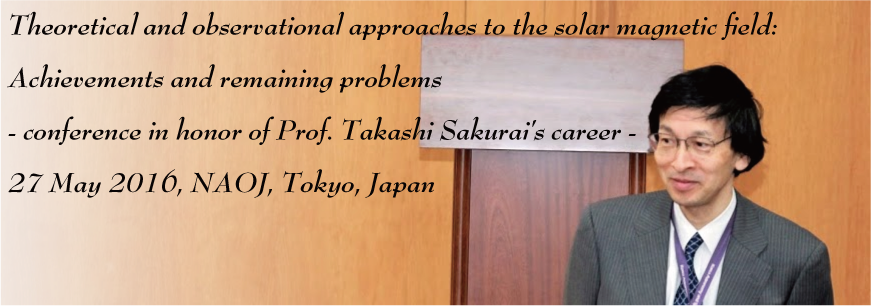
T. Sakurai
This talk is meant to provide deliberately bold proposals on some fundamental problems in solar physics, which are usually not possible considering the subsequent refereeing process; this is an advantage of the retirement talk.
(1) About the flare problem, my major interest has not been in the energy release process (reconnection) but in the energy build-up process. Participation in Kusano san's new program PSTEP is a continuation of this interest. Roughly half of major flares are energized by flux emergence, while the remaining half take place by accumulating magnetic shear. The latter group may well be forecast by monitoring magnetic field vectors on the surface. In this context I have some ideas about Stokes inversion improving the Unno-Rachkovsky formula.
(2) Heating of the corona in open-field regions must be due to waves because the Sun cannot manipulate field lines at their footpoints. The situation will be the same for large-scale structures in the quiet sun. In active regions, footpoint motions may drive reconnection at the loop-top regions, creating hot 10 MK plasmas. However, such flare events contribute only 10-20% of coronal heating. My guess is that reconnection events in the footpoint regions that produce only warm (2 MK) plasmas (they are not flares) are the source of heating in the active region corona.
(3) For more than 30 years we have carried out solar vector magnetic field observations. The solar-cycle behavior and irregularity of magnetic helicity are of particular interest. I will discuss their implications on the dynamo alpha effect operating in the convection zone
Back to Oral